If you’re trying to plant and harvest crops year round, adding a persimmon tree to your garden or small orchard is a great option to fill in the winter months. Here’s what you need to know about some common persimmon varieties. Not all persimmons are created equal!
Originally published December 2017; this post has been updated.
When I was growing up, my grandpa couldn’t wait for persimmon season. When the leaves of his persimmon tree began to turn color and drop, the anticipation grew. Eventually, the tree was bare of leaves, leaving behind fruits with deep orange skin on the skeleton of a tree. That fruit would hang for months on his persimmon tree, it seemed, and he’d happily harvest them one at a time to eat.
The tree was beautiful in the fall, but the fresh fruit? Blech. If it was underripe, it was terribly astringent. Ripe, it was soft like a pudding, a texture that I just couldn’t handle. The soft fruit was excellent for baking with, though, and persimmon cookies were annual fall fare.
Know your Persimmons
Turns out, there are different types of persimmons and I didn’t give them enough of a chance. Grandpa’s tree was an American persimmon variety, known for its soft fruit. Years later, someone finally convinced me to give fresh persimmons another chance, promising that a Fuyu persimmon was different.
Grow Some Greens!
Ready to grow fresh greens, no matter WHERE you live? Sign up for my
FREE quick-start guide and start growing some of your own food!
And they were. Fruit from a fuyu persimmon tree is quite different. Fuyu persimmons are still crunchy when ripe, and they have a flavor that’s a bit spicy and apricot-like. These? I like. They’re tasty out of hand or made into a salad.
New to gardening? Limited on space? The 5-Gallon Garden gives you the skills you need to grow food in the space you have. Get started with your garden today!
Persimmon Varieties
There are a number of persimmon varieties to choose from, each with its own merits and uses. Which persimmon tree you opt to plant will depend on a number of factors: What grows well in your region, how you plan to use the persimmons, and the space available to you.
Thousands of persimmon cultivars exist, but a few are commonly planted. Of these, there are those that bear astringent fruit and those that bear non astringent persimmons.
The astringent fruits must be very, very soft before they are ripe enough to eat.
Get impatient and you’ll find yourself trying to figure out just what happened. The tannins in an unripe persimmon cause a puckery dry mouth that is unpleasant.
American Persimmon Tree – USDA Zones 4-10
Not surprisingly, the American persimmon (Diospyros virginiana) is native to North America and grown commonly in the United States. It’s cold-hardier than its Asian counterparts, and larger as well.
An American persimmon tree reaches 35′-50 feet in height and width. Two common named varieties are Prok and Yates. This is a self-pollinating persimmon variety; a single tree will produce plenty of large fruit.
The fruit of an American persimmon tree is bright orange and astringent; it must be quite soft before it’s considered ripe. Use the flesh in baking or to pull together a batch of my persimmon granola or persimmon pancakes.
Fuyu Persimmon Tree – USDA Zones 7-10
Bearing non-astringent persimmon fruit, this is — in my opinion — the best persimmon. A Fuyu persimmon tree will grow 15′-20′ tall and equally as wide. It’s self-pollinating, so a single tree will produce fruit.
The fruit of a Fuyu persimmon tree stays firm when ripe. Eaten fresh, it’s sweet and crunchy like an apple and great for slicing onto a plate for snacking or adding to fresh salads.
Hachiya Persimmon Tree – USDA Zones 7-10
A Hachiya persimmon tree will grow 15′-20′ tall, and like the Fuyu, is another that doesn’t need pollination. The acorn-shaped fruit of this Japanese persimmon variety is another astringent variety that must be fully ripe for the best experience.
Pull off the calyx and use a spoon to scoop out the pudding-like, almost translucent fruit of this persimmon variety. Or use it to make a batch of our favorite persimmon cookies.
Persimmon Tree Care
Plant persimmon trees in full sun. Most persimmon varieties prefer well-drained and slightly acidic, fertile soil. Add a layer of mulch around the planting area, but don’t fertilize young trees.
Even older trees only require fertilization if growth stalls or leaves lose their dark green color. Use a balanced fertilizer or spread a layer of compost around the base of the tree. Be mindful that too much fertilizer can cause fruit to drop prematurely.
Buying Persimmon Trees
If persimmons aren’t available at your local nursery, you can order them online during the bare root season. Check these online sellers:
Using Persimmons in Recipes
Beside fresh eating, persimmons make a great addition to a variety of recipes and can be used to replace pumpkin when it’s called for in most recipes. Try these:
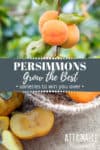
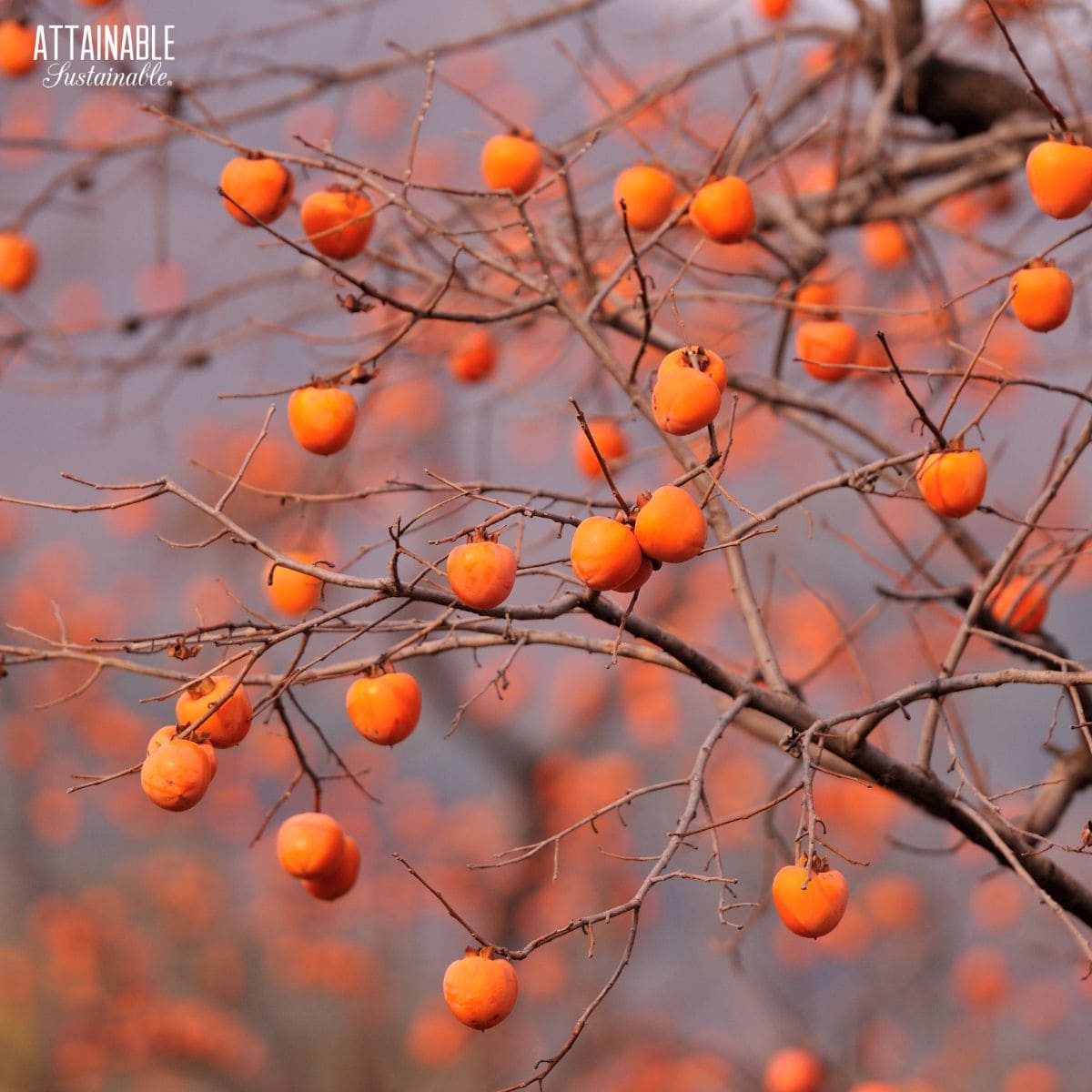
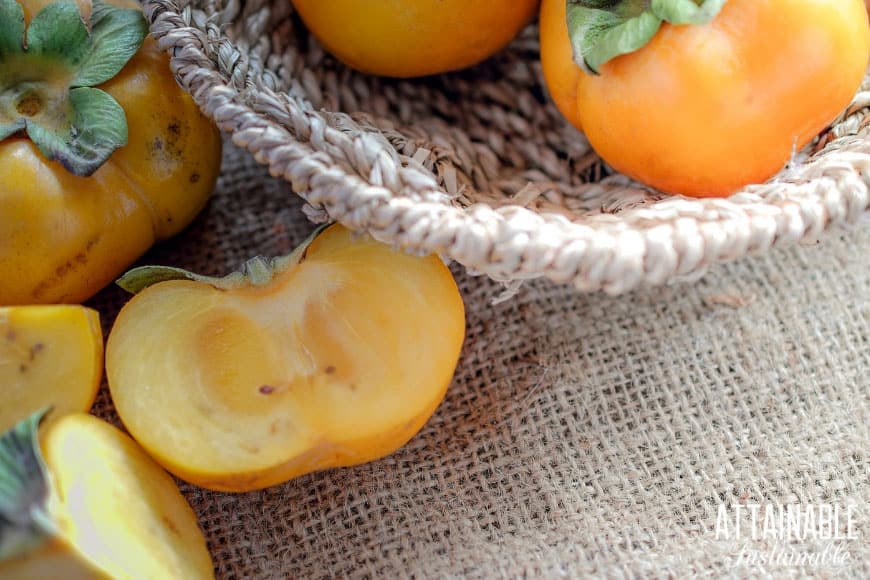

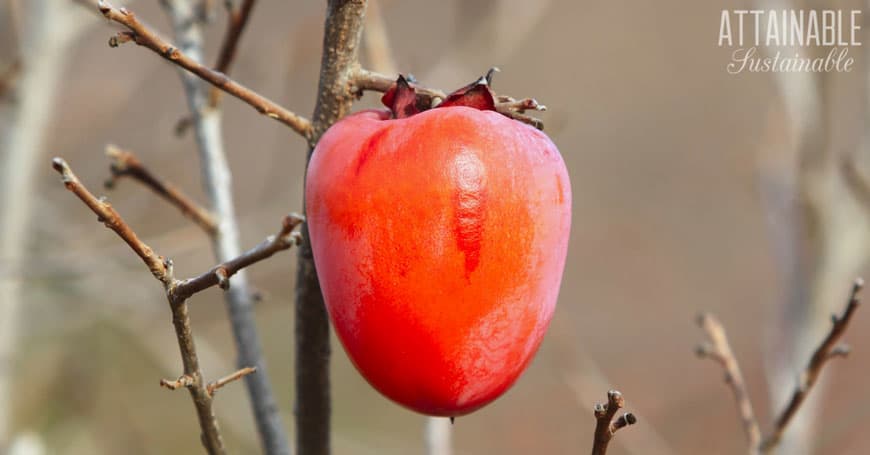
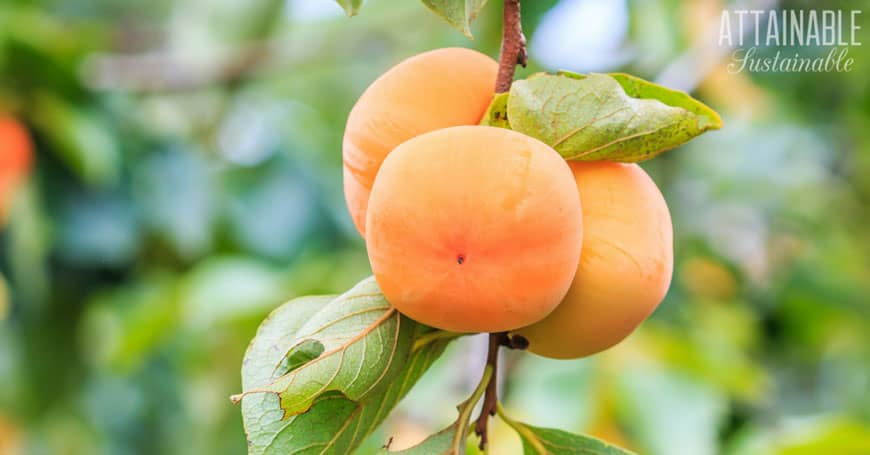
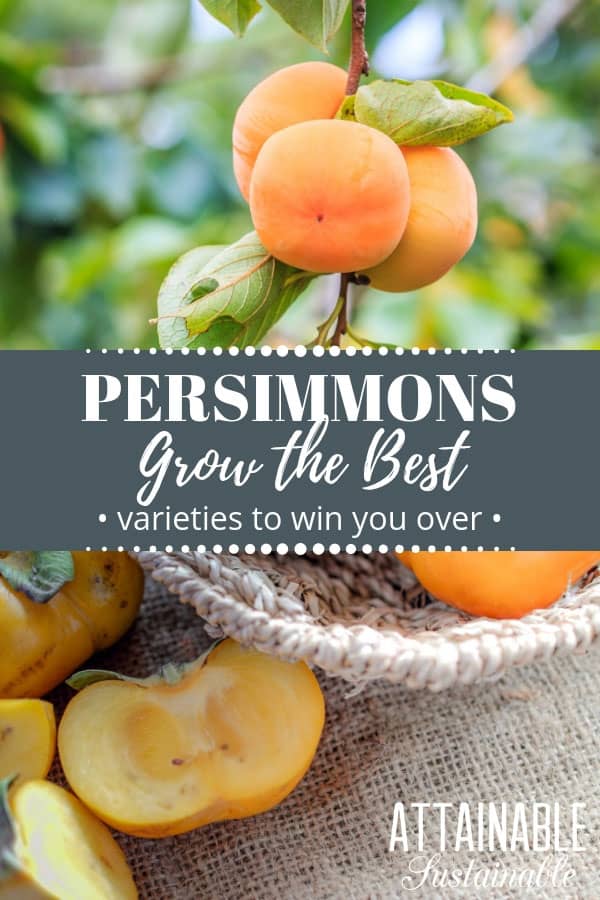





Persimmons are delicious and one of our favorite fruit trees. The fuyu is what we have and it’s the non astringent type meaning it “puckers”. Lovely to eat and bake with
Hi I live in San Mateo CA. I love the soft squeashy persimmons. Can I grow them in a large planter? I get about 3 sun hours during Sumer/ fall. Thank you
You might contact your local nursery to see if they carry any dwarf varieties.
But the article says that the ASTRINGENT types are the puckery ones, not the non:
“The astringent fruits must be very, very soft before they are ripe enough to eat.
Get impatient and you’ll find yourself trying to figure out just what happened. The tannins in an unripe persimmon cause a puckery dry mouth that is unpleasant.”
So I’m confused…..